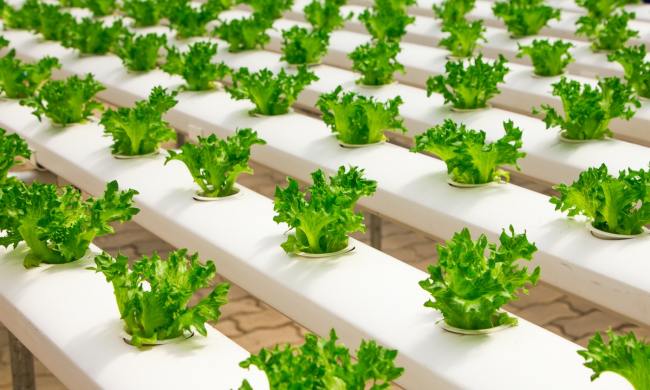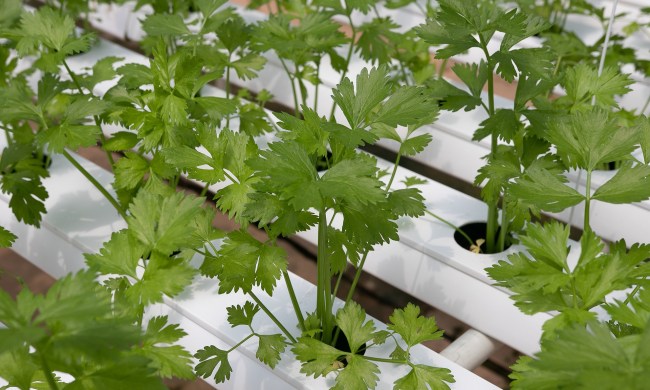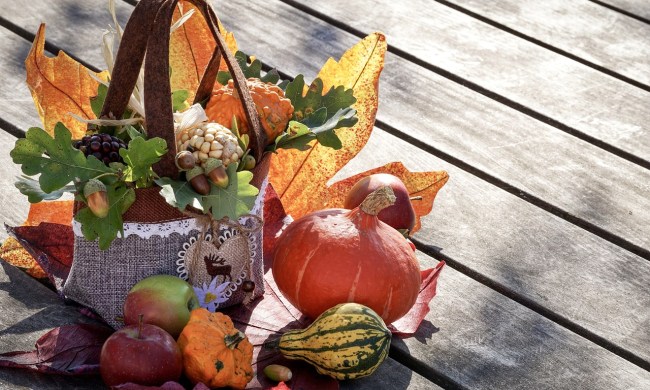It’s no question that houseplants help improve the warmth, aesthetic, and presence of a space. They brighten up your home, and the variety of leaves, sizes, and flowers makes them versatile for shelves, hanging baskets, and even desks. In the summer, they’re thriving — growing steadily and thanking you for all the care you put in. But sometimes when the cold sets in, you may notice your plants getting a bit sad. One of the biggest reasons for this is a lack of humidity.
With the colder months comes a drier climate, and although plants can naturally create their own humidity when gathered together in a group, they may need a bit of extra help. An indoor garden humidifier can help give your plants the boost they need to survive the cold season and carry on into the spring. But how do you know which one is right for you?
Choosing the best humidifier for your space
When it comes to choosing the best humidifier for your indoor garden, there are a few things to consider:
- How many plants do you have? How many rooms are they in? If you have them spread out around the house, you may need to cluster them together or purchase more than one humidifier.
- What’s the price? The cost of an indoor garden humidifier can make a big difference if you’re on a budget. A lower cost means fewer extra bits and bobs, but budget-friendly humidifiers will still get the job done well.
- How big is your space? Similar to how spread out your plants are, the size of the room they’re in will affect which humidifier you purchase. Most indoor garden humidifiers can only cover a certain amount of square footage. So, even with your plants all in one room, if the room is big, you want to take that into consideration.
Most, if not all, indoor gardens will especially look for an indoor humidifier that’s easy to clean. When you’re already dedicating a lot of your time to pruning, trimming, watering, and inspecting your houseplants (in addition to that one hour per day you have allotted to sit and stare at them because they’re just so beautiful), you don’t want to add in an indoor humidifier that’s more of a hassle than a benefit.
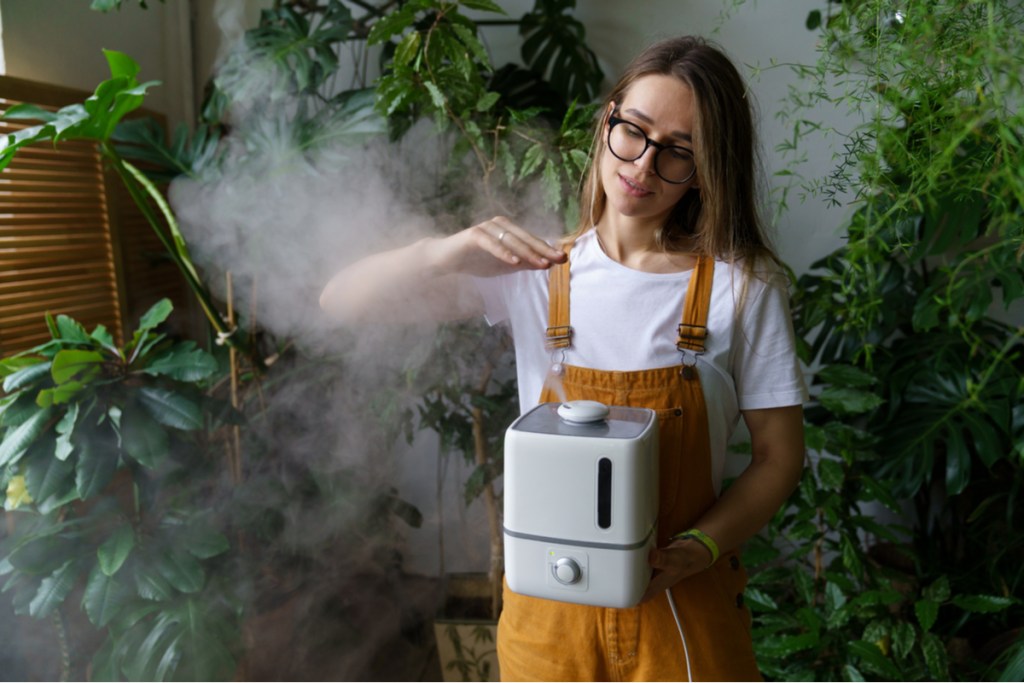
Good: Humii’s 360 Degree Humidifier
Humii has a 360 Degree Humidifier for indoor gardens that’s perfect for gardeners on a budget! It’s lightweight and small (roughly around eight inches in height), so you can fit it on a shelf or a plant stand if you don’t have room to allocate for a larger model. Best of all, there’s even a small light that comes out of the top for an added bit of visual interest!
Pros
Humii’s 360 Degree Humidifier comes in coral blue, navy blue, pink, and white, so you’ll be able to pick the one that best matches your aesthetic and your plant pots. It comes with a USB for easy charging, so you don’t need to worry about keeping it near an outlet, and has an operating manual.
Cons
The 360 Degree Humidifier is on the smaller side with a 200mL tank and a five-hour maximum run time, which means you may find yourself refilling it daily. It isn’t a problem if you have the time and can easily remember, but it may not be an ideal option for people with busy schedules. The smaller tank also means that it’s better suited for spaces with smaller houseplant collections, otherwise you may find yourself having to buy more than one.
Price: $20
Better: Noma’s Ultrasonic Humidifier
Noma’s Ultrasonic Humidifier is a higher cost but has a near-one-gallon (3.5L) tank. It has a sleek, modern design that can fit seamlessly into any home and has a medium-room capacity for spaces up to 400 square feet. The ultrasonic technology is designed to humidify quickly at a rate of about 240mL of moisture per hour, and it even has an ion exchange filter to help reduce calcium and white dust build-up in the water tank.
Pros
The Ultrasonic Humidifier has a maximum run time of 24 hours; however, it includes the option to choose between two, four, and eight-hour timed options if you only want it to run for a set amount each day. This indoor garden humidifier has an auto shut off feature that prevents it from running once it’s empty, which lends itself to being a bit of a lower maintenance model.
Cons
Unfortunately, Noma’s indoor garden humidifier is on the higher end, budget-wise, and only covers rooms up to 400 square feet. Although that’s a decent amount of space, it won’t work well in larger living rooms or homes where the houseplants are more spread out or in insulated sunrooms that are on the bigger side.
Price: $69
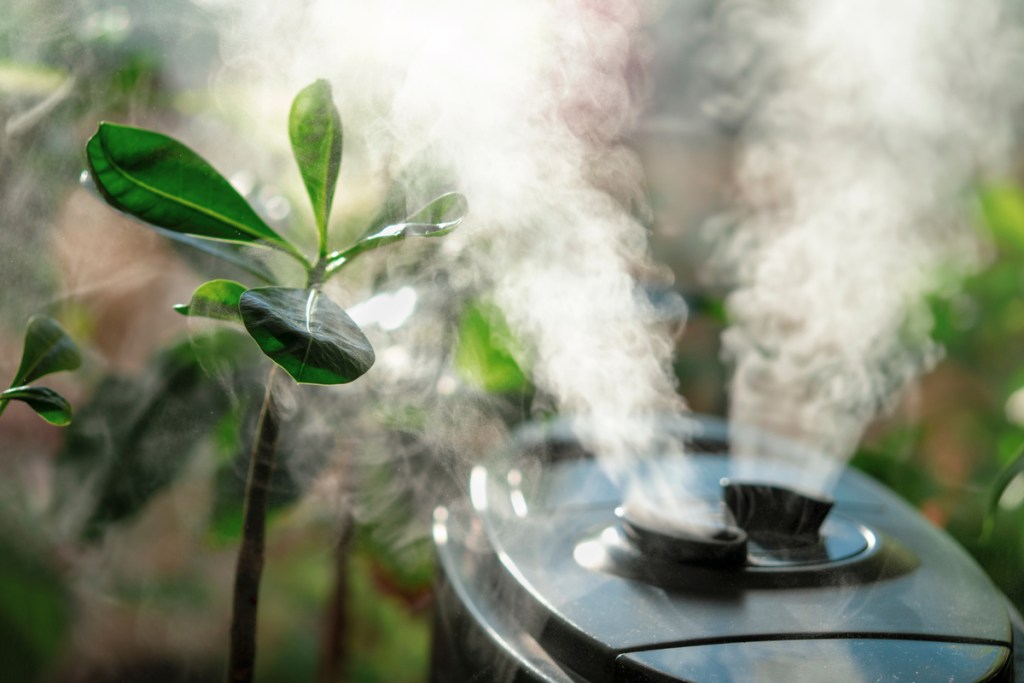
Best: Aircare’s AURORA
The Aircare AURORA is perhaps one of the best options for an indoor garden humidifier. Its price point falls in the middle — not too affordable but not so expensive that it’s the only thing you’ll be buying for the next six months. It covers up to 750 square feet of space, has an ultra-fine mist, and even has a demineralization cartridge to help keep the water cleaner and prevent build up in the tank.
Pros
The Aircare AURORA has a 24-hour maximum run time and can hold up to a gallon of water. It has analog controls, a removable tank, a refill indicator, and a demineralization cartridge. It even functions as a multicolor nightlight and essential oil diffuser!
Cons
It’s a bit on the larger size. If your indoor garden is in a smaller space, you may not have the room for a one-gallon garden humidifier. Luckily, that’s where the AURORAmini comes in. It holds less water and has a lower run time, but has comparable features to the full-size equivalent.
Price: $58
Ultimately, the indoor garden humidifier you choose is up to you. This list isn’t exhaustive, and there are plenty of options out there, from large-tank models to budget-friendly picks. As long as you pick one that’s right for you, you can’t go wrong.
